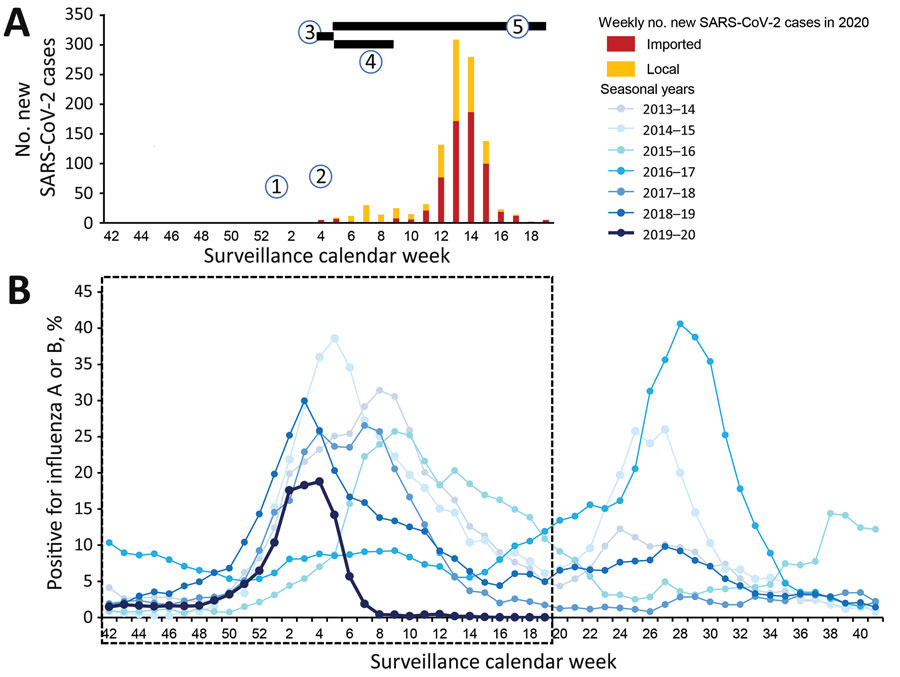Volume 26, Number 11—November 2020
Research Letter
Abrupt Subsidence of Seasonal Influenza after COVID-19 Outbreak, Hong Kong, China
Figure

Figure. Epidemic curve showing number of reported SARS-CoV-2 cases (A) in Hong Kong, China, and abrupt subsidence during the corresponding 2019–20 winter influenza season (B) compared with 6 preceding years between 2013 and 2019, as derived from the percentage of respiratory specimens tested that were positive for influenza A or B viruses. Onset of winter influenza season is defined as the first week that had an increase in percentage of respiratory samples tested that were positive for influenza A or B viruses, followed by a consecutive increase for >4 weeks. End of the season is defined as the last week that had a decrease of the same percentage, followed by a consecutive decrease for >2 weeks, compared with the previous week. SARS-CoV-2 timelines: 1, on December 30, 2019, the Wuhan Municipal Health Committee issued an urgent notice on treatment for pneumonia of unknown cause; 2, on January 25, 2020, the World Health Organization declared a Public Health Emergency of International Concern; 3, during January 25–28, 2020, the Lunar New Year public holiday occurred; 4, during January 29–March 1, 2020, civil servants made special work arrangements; 5, during January 29–May 26, 2020, schools were closed. SARS-CoV-2, severe acute respiratory syndrome coronavirus 2.